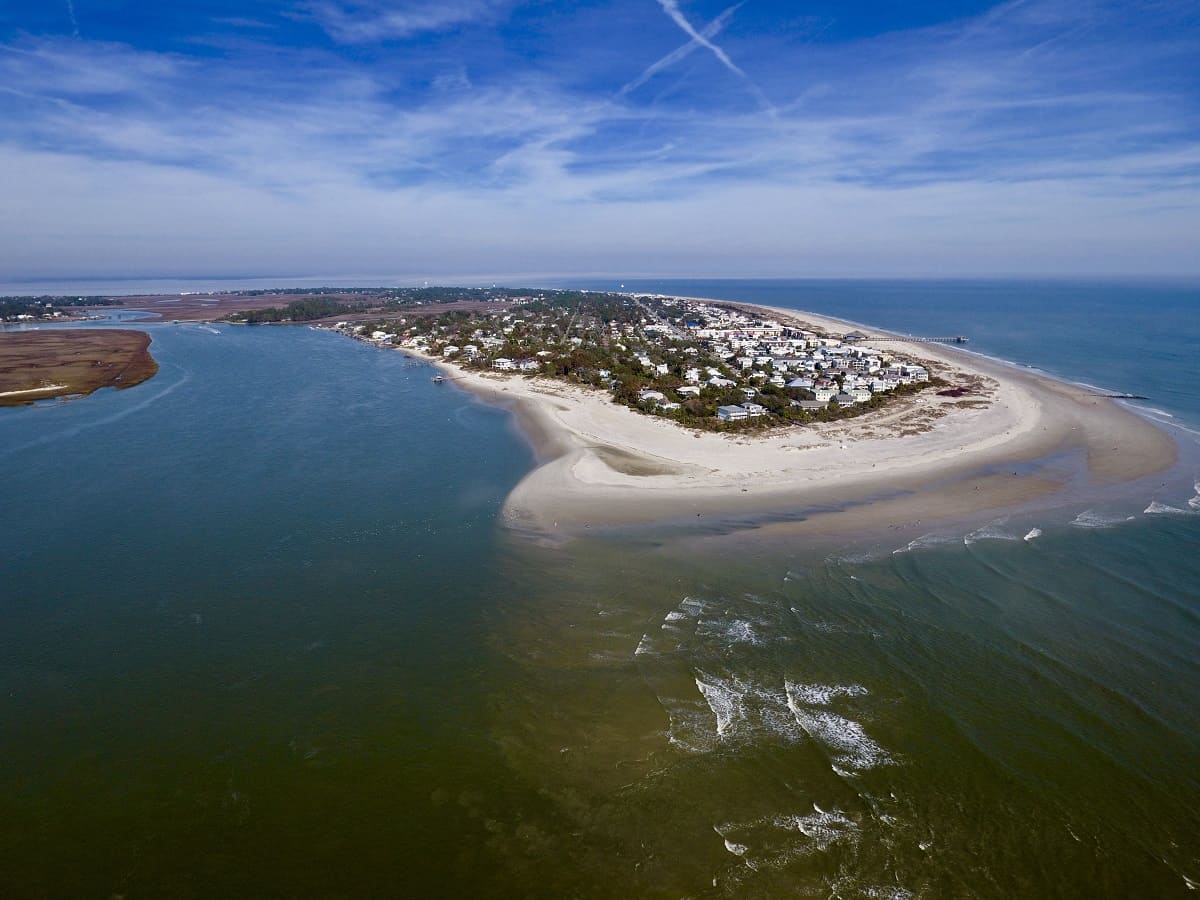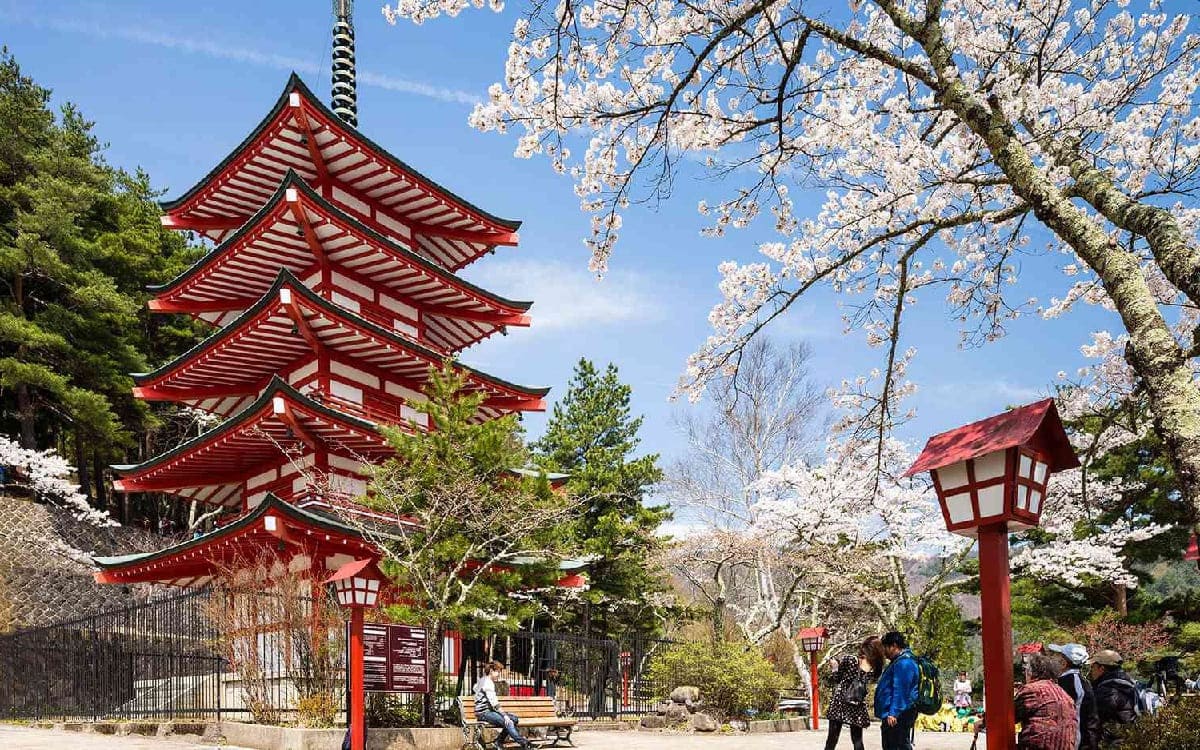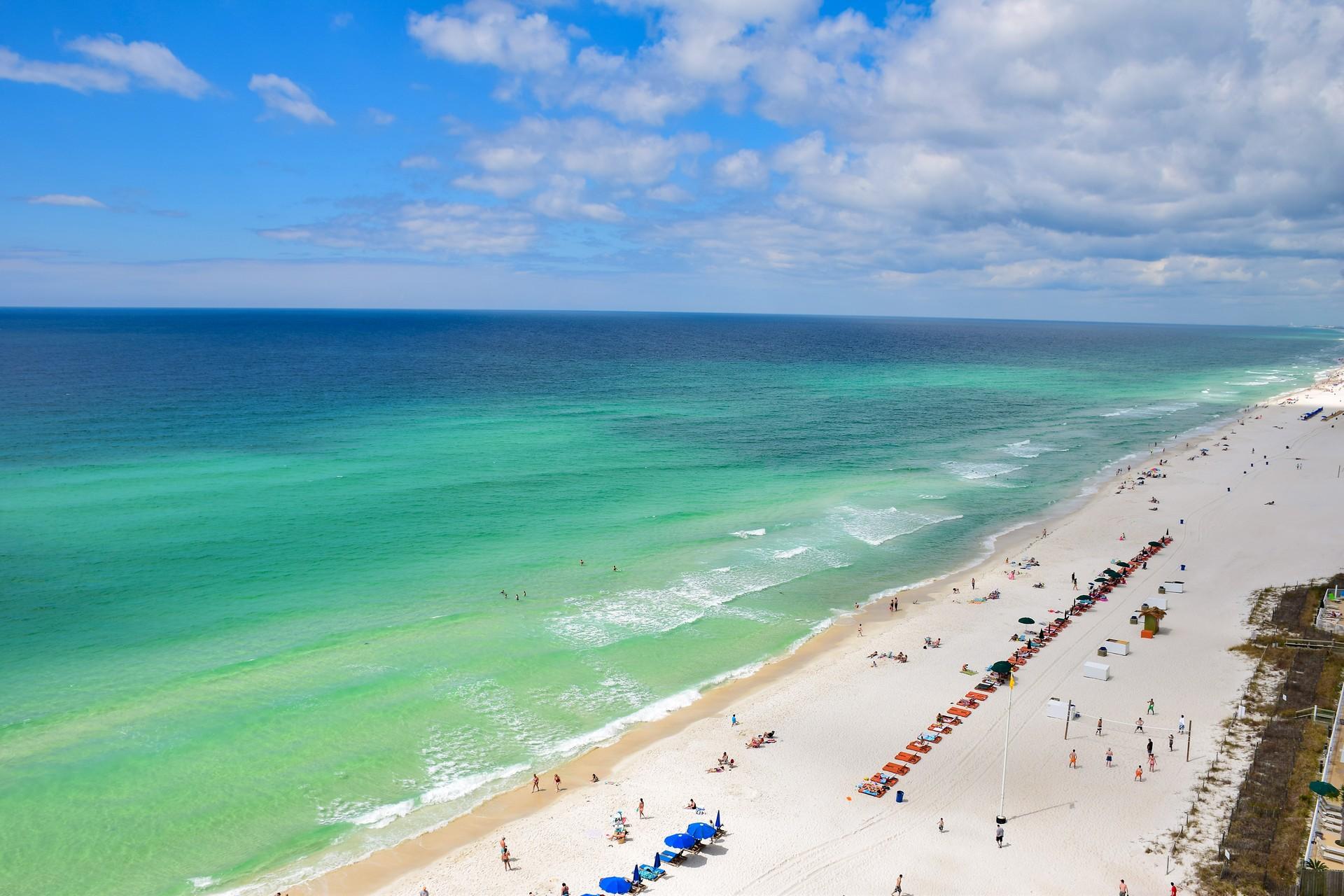Home>Weather and Climate>Bahamas Water Temperature: Everything You Need To Know


Weather and Climate
Bahamas Water Temperature: Everything You Need To Know
Published: March 2, 2024
Discover the Bahamas water temperature and climate information to plan your perfect vacation. Learn about the weather and climate in the Bahamas.
(Many of the links in this article redirect to a specific reviewed product. Your purchase of these products through affiliate links helps to generate commission for Temperatures.com, at no extra cost. Learn more)
Table of Contents
Introduction
The Bahamas, with its stunning beaches and crystal-clear waters, is a tropical paradise that beckons travelers from around the world. One of the key factors that greatly influences the experience of visitors to this island nation is the water temperature. Whether you're a sun-seeking beach enthusiast, an avid snorkeler, or a deep-sea fishing aficionado, understanding the nuances of Bahamas water temperature can significantly enhance your enjoyment of the myriad aquatic activities available.
The temperature of the water surrounding the Bahamas is a dynamic and ever-changing aspect of its natural environment. It is influenced by a variety of factors, including seasonal variations, ocean currents, and proximity to the equator. As such, having a comprehensive understanding of these elements is crucial for anyone looking to make the most of their time in this tropical oasis.
In this article, we will delve into the intricacies of Bahamas water temperature, exploring the factors that affect it, the best times to visit based on water temperature, popular activities influenced by water temperature, and valuable tips for maximizing your enjoyment of the water at different temperatures. By the end of this journey, you will be equipped with the knowledge needed to make informed decisions about when to visit the Bahamas and how to make the most of its inviting waters. So, let's dive in and uncover everything you need to know about Bahamas water temperature!
Factors Affecting Bahamas Water Temperature
The water temperature in the Bahamas is influenced by a myriad of factors, each playing a crucial role in shaping the aquatic environment of this tropical paradise. Understanding these factors is essential for gaining insight into the fluctuating temperatures and their impact on the overall experience of visitors and locals alike.
-
Seasonal Variations: The Bahamas experiences distinct seasons, with summer and winter being the most pronounced. During the summer months, which typically span from June to August, the water temperature tends to be at its warmest, often reaching an inviting 80-84°F (27-29°C). Conversely, in winter, from December to February, the water temperature can dip to a cooler 72-76°F (22-24°C). These seasonal variations are influenced by the position of the sun, with summer bringing longer days and more direct sunlight, resulting in warmer waters.
-
Ocean Currents: The Bahamas is influenced by the flow of ocean currents, which can have a significant impact on water temperature. The Gulf Stream, a powerful warm ocean current originating in the Gulf of Mexico, flows in close proximity to the islands of the Bahamas. This current contributes to the overall warmth of the water, especially along the eastern coast of the islands. Conversely, the cooler waters of the North Equatorial Current can influence the western side of the archipelago, leading to variations in water temperature across different regions.
-
Proximity to the Equator: The Bahamas is situated relatively close to the equator, resulting in consistently warm temperatures throughout the year. The proximity to the equator means that the islands receive ample sunlight, which in turn warms the surrounding waters. This equatorial influence contributes to the overall tropical climate of the Bahamas, ensuring that the water temperature remains inviting for much of the year.
-
Weather Patterns: The weather, including wind patterns and precipitation, can also impact water temperature. Wind can lead to upwelling, where cooler water from deeper ocean layers rises to the surface, temporarily lowering the overall temperature. Additionally, heavy rainfall can have a cooling effect on the water, particularly in localized areas where freshwater runoff enters the ocean.
By considering these factors, it becomes evident that the water temperature in the Bahamas is a dynamic and multifaceted aspect of its natural environment. The interplay of seasonal variations, ocean currents, proximity to the equator, and weather patterns collectively contribute to the diverse range of water temperatures experienced throughout the archipelago. This intricate tapestry of influences underscores the dynamic nature of the Bahamas' aquatic realm, offering a captivating environment for visitors and locals to explore and enjoy.
Best Times to Visit Based on Water Temperature
The best times to visit the Bahamas, based on water temperature, are closely tied to seasonal variations and the resulting impact on the aquatic environment. For travelers seeking warm and inviting waters, the summer months, spanning from June to August, offer the ideal conditions for indulging in a variety of water-based activities. During this period, the water temperature in the Bahamas tends to reach its peak, often hovering between 80-84°F (27-29°C). These balmy temperatures create a perfect setting for swimming, snorkeling, and engaging in water sports, providing an immersive and rejuvenating experience for visitors.
Conversely, the winter months, from December to February, present a different yet equally captivating opportunity for exploration. While the water temperature may dip to a cooler 72-76°F (22-24°C) during this time, it remains comfortably mild, especially for those accustomed to temperate climates. This period offers a unique perspective of the Bahamas, with the cooler waters providing a refreshing contrast to the warmth of the surrounding air. Additionally, the winter months are characterized by fewer crowds, allowing for a more serene and intimate experience amidst the natural beauty of the islands.
It's important to note that the transitional periods between seasons also hold their own allure for visitors. The spring and fall months, encompassing March to May and September to November, respectively, offer a blend of temperatures that cater to a diverse range of preferences. During these transitional phases, the water temperature gradually transitions between the warmth of summer and the mildness of winter, providing a balanced and comfortable environment for various aquatic pursuits.
Ultimately, the best time to visit the Bahamas based on water temperature depends on individual preferences and the specific activities one wishes to engage in. Whether it's basking in the warmth of the summer sun, embracing the tranquility of the winter months, or savoring the harmonious transitions of spring and fall, the Bahamas offers a spectrum of experiences tailored to the nuances of water temperature throughout the year.
By aligning your visit with the water temperature that best complements your desired activities, you can maximize your enjoyment of the Bahamas' aquatic wonders, creating lasting memories amidst the captivating allure of its pristine waters.
Popular Activities Based on Water Temperature
The water temperature in the Bahamas serves as a pivotal factor in shaping the array of popular activities available to visitors throughout the year. The diverse range of temperatures experienced across different seasons creates an ever-changing aquatic playground, offering a multitude of experiences tailored to the preferences of travelers and water enthusiasts.
Warm Water Activities (80-84°F / 27-29°C)
During the summer months, when the water temperature reaches its warmest levels, the Bahamas becomes a haven for an assortment of water-based activities. The balmy waters, typically ranging from 80-84°F (27-29°C), set the stage for an immersive aquatic adventure. Snorkeling amidst vibrant coral reefs, teeming with an abundance of marine life, becomes a mesmerizing experience in the warm embrace of the ocean. The clarity and warmth of the water during this period create optimal conditions for exploring the captivating underwater world, making it an ideal time for snorkeling enthusiasts to revel in the beauty of the Bahamas' marine ecosystems.
Furthermore, the inviting temperatures of the summer months provide an ideal setting for swimming and indulging in water sports such as jet skiing, paddleboarding, and kayaking. The warmth of the water enhances the overall enjoyment of these activities, allowing visitors to fully immerse themselves in the refreshing embrace of the ocean while partaking in exhilarating water-based pursuits.
Mild Water Activities (72-76°F / 22-24°C)
In the winter months, when the water temperature cools to a milder 72-76°F (22-24°C), a different set of activities comes to the forefront. While the water may be cooler during this period, it remains comfortably mild, offering a refreshing contrast to the warmth of the surrounding air. This presents an opportune time for deep-sea fishing enthusiasts to embark on thrilling fishing expeditions, as the cooler waters attract an abundance of fish, including marlin, tuna, and mahi-mahi. The mild water temperature creates favorable conditions for an exhilarating fishing experience, adding an element of adventure to the winter months in the Bahamas.
Additionally, the cooler waters provide a refreshing backdrop for leisurely boat cruises and sailing excursions, allowing visitors to bask in the serene beauty of the archipelago while enjoying the gentle embrace of the mild ocean temperatures. The winter months offer a tranquil setting for exploring the islands from a maritime perspective, providing a unique and captivating experience for those seeking a more relaxed aquatic adventure.
Transitional Water Activities (Spring and Fall)
During the transitional periods between seasons, encompassing the spring and fall months, the Bahamas offers a harmonious blend of water temperatures that cater to a diverse range of activities. The gradual transition between the warmth of summer and the mildness of winter creates an environment conducive to a variety of pursuits. Whether it's engaging in snorkeling and diving as the water gradually warms in the spring, or embarking on leisurely boat trips amidst the gentle temperatures of fall, these transitional phases provide a balanced and comfortable setting for exploring the aquatic wonders of the Bahamas.
By aligning your visit with the water temperature that best complements your preferred activities, you can fully immerse yourself in the captivating allure of the Bahamas' pristine waters, creating unforgettable memories amidst the ever-changing aquatic landscape.
Tips for Enjoying the Water at Different Temperatures
Embracing the diverse water temperatures in the Bahamas opens up a world of aquatic experiences, each offering its own unique charm and allure. Whether you find yourself immersed in the warm embrace of summer or savoring the refreshing coolness of winter, there are valuable tips to enhance your enjoyment of the water at different temperatures.
Warm Water (80-84°F / 27-29°C)
-
Snorkeling Delights: When the water temperature peaks during the summer months, snorkeling becomes an enchanting activity. To make the most of this experience, consider using a high-quality snorkel mask and fins to explore the vibrant coral reefs and marine life with ease and comfort.
-
Sun Protection: The warm waters beckon for extended periods of aquatic exploration. It's essential to apply waterproof sunscreen generously to safeguard your skin from the sun's rays while reveling in the inviting ocean.
-
Hydration: Engaging in water-based activities in warm temperatures can lead to increased perspiration and exertion. Stay hydrated by bringing along a reusable water bottle to replenish fluids and ensure a comfortable and enjoyable experience.
Mild Water (72-76°F / 22-24°C)
-
Layering for Comfort: As the water temperature cools during the winter months, consider wearing a thin wetsuit or rash guard to provide an additional layer of insulation. This ensures that you remain comfortable while partaking in activities such as deep-sea fishing or leisurely boat cruises.
-
Adaptable Activities: Embrace the mild water temperatures by engaging in adaptable activities such as fishing and sailing. These pursuits allow you to savor the tranquil beauty of the Bahamas' waters while appreciating the refreshing contrast of the cooler ocean environment.
-
Scenic Exploration: Use the milder temperatures as an opportunity to embark on scenic coastal explorations. Whether it's strolling along the pristine beaches or capturing captivating ocean vistas, the mild water temperature provides an ideal backdrop for leisurely coastal adventures.
Transitional Water (Spring and Fall)
-
Versatile Attire: During the transitional periods, opt for versatile attire that allows you to adapt to the changing water temperatures. Consider wearing quick-drying clothing suitable for both warm and mild conditions, ensuring comfort as you transition between different aquatic activities.
-
Diverse Excursions: Take advantage of the balanced water temperatures during the transitional phases by diversifying your excursions. From snorkeling in the gradually warming waters of spring to enjoying leisurely boat trips in the gentle temperatures of fall, these periods offer a spectrum of experiences to savor.
-
Weather Awareness: Stay informed about weather patterns and forecasts during transitional periods. Being mindful of potential changes in wind and precipitation can enhance safety and ensure a seamless transition between activities, allowing you to make the most of the evolving aquatic environment.
By embracing these tips tailored to different water temperatures, you can elevate your aquatic adventures in the Bahamas, creating cherished memories amidst the captivating allure of its pristine waters.
Conclusion
In conclusion, the water temperature in the Bahamas is a dynamic and influential aspect of its natural environment, shaping the experiences of visitors and locals alike. The interplay of seasonal variations, ocean currents, proximity to the equator, and weather patterns collectively contributes to the diverse range of water temperatures experienced throughout the archipelago. Understanding these nuances is essential for making informed decisions about when to visit the Bahamas and how to maximize the enjoyment of its inviting waters.
The best times to visit the Bahamas, based on water temperature, offer distinct yet equally captivating opportunities for exploration. Whether it's the warm embrace of summer, the refreshing coolness of winter, or the harmonious transitions of spring and fall, the Bahamas presents a spectrum of experiences tailored to the nuances of water temperature throughout the year. By aligning your visit with the water temperature that best complements your desired activities, you can immerse yourself in the captivating allure of the Bahamas' pristine waters, creating lasting memories amidst its ever-changing aquatic landscape.
Furthermore, the diverse water temperatures give rise to a myriad of popular activities, each offering its own unique charm and allure. From snorkeling amidst vibrant coral reefs in warm waters to embarking on leisurely boat cruises in mild temperatures, the Bahamas provides an array of experiences tailored to the preferences of travelers and water enthusiasts. By embracing the tips tailored to different water temperatures, visitors can elevate their aquatic adventures, creating cherished memories amidst the captivating allure of the Bahamas' pristine waters.
Ultimately, the dynamic nature of the Bahamas' aquatic realm, influenced by its fluctuating water temperatures, underscores the richness and diversity of its marine environment. Whether you're seeking vibrant underwater explorations, exhilarating water sports, or serene coastal excursions, the Bahamas offers an immersive and rejuvenating experience for all. By delving into the intricacies of Bahamas water temperature, visitors can unlock the full potential of their aquatic adventures, forging unforgettable connections with the natural wonders of this tropical paradise.













